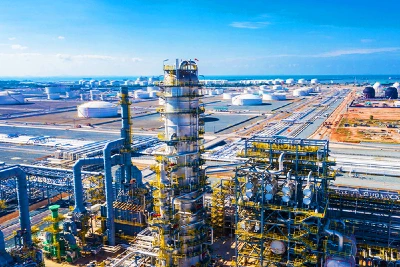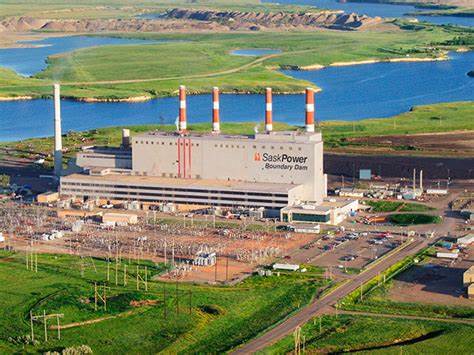Recent findings from a significant climate report suggest that technologically driven solutions to climate change might not be the silver bullets we once hoped for.
The International Energy Agency (IEA) has released an updated strategy for achieving net-zero greenhouse gas emissions by 2050. The revised strategy underscores an urgent pivot to renewable energy sources and dampens enthusiasm for technologies that remain largely experimental, such as carbon capture and hydrogen fuels.
Established initially to ensure stable oil supplies globally, the IEA made headlines in 2021 with its inaugural road map. This bold strategy advised an end to investments in new fossil fuel projects.
The blueprint offered measures for nations to align with the Paris Agreement’s goals: curbing global temperature rises to approximately 1.5 degrees Celsius. However, with current global warming trends hitting 1.2 degrees Celsius and triggering climatic extremes, the IEA felt compelled to recalibrate its guidance.
A key takeaway from the updated report is the downscaling of the projected impact of nascent technologies that were previously hailed as the next big things in climate solutions. Technologies like hydrogen fuel cells for heavy vehicles and devices capturing CO2 emissions have been earmarked to contribute to just 35% of emission reductions, a drop from the nearly 50% anticipated earlier.

Hydrogen Production
A vast majority of the world's hydrogen is produced using fossil fuels, primarily through steam methane reforming. The Petronas Hydrogen Production Facility in Malaysia stands as a testament to this, utilizing natural gas as its primary resource. While the environmental impact of this method is a matter of debate, its prevalence highlights the challenges in shifting to cleaner hydrogen production methods.
Dave Jones from the energy think tank Ember commented, “I think that some realism has kicked in,” questioning how these revelations might impact related industries. Currently, hydrogen’s role as a sustainable fuel faces challenges. While it’s not a new player in the energy game, its predominant production still relies on gas. Countries, including the US, are pouring resources into green hydrogen production.
Yet, challenges in establishing extensive hydrogen distribution networks have emerged, while electric charging systems seem to be expanding more swiftly.

The report also delivered a sobering verdict on carbon capture technologies, suggesting a roughly 40% reduction in their anticipated role in emissions curbing. The IEA’s document highlights the frequent disappointment carbon capture has historically delivered, further backed by instances like the US Department of Energy’s considerable funds spent on unsuccessful carbon capture endeavors.

Carbon Capture
The Boundary Dam Power Station in Saskatchewan, Canada, showcases both the potential and challenges of carbon capture. As one of the world's pioneering large-scale coal-fired stations with integrated carbon capture and storage technology, it has managed to capture substantial CO2 volumes. However, it has also faced hurdles, from technical glitches to concerns about cost-efficiency.
IEA executive director, Fatih Birol, emphasized the pressing need to focus on preventing carbon emissions: “Removing carbon from the atmosphere is very costly. We must do everything possible to stop putting it there in the first place.” Should global temperatures breach the 1.5-degree mark, countries might resort to pricey, untested large-scale carbon capture solutions, albeit with associated risks.
To genuinely tackle the root of the problem, the report advocates tripling the global renewable power capacity by 2030. Furthermore, investments in clean energy should soar from $1.8 trillion currently to an impressive $4.5 trillion in the coming decade. Enhanced energy efficiency and accelerated net-zero goals for affluent nations are also spotlighted.

Electric Infrastructure Growth
The burgeoning electric vehicle market has seen infrastructural advancements, like Tesla's Supercharger network, which has spread rapidly across continents. This widespread electric charging infrastructure contrasts starkly with the limited number of hydrogen refueling stations globally, underscoring the momentum electric vehicles have gained.
More To Discover
- What Happens When There’s Less Wind To Power Our Turbines? Illinois’ Is Dealing With That Now.
- U.S. Fish and Wildlife Service Declares 21 Species Officially Extinct
- Scientists Unlock Circular Recycling for One Of The Most Common Plastics
- Using An Invasive Species To Solve Period Poverty In Africa, Sustainably
The release of this revised road map is timely. It follows the United Nations’ inaugural assessment of global climate change efforts, which sadly highlighted a collective shortfall. While a recent UN climate summit sought to bolster nations’ green energy commitments, key players like China and the US were notably absent. The forthcoming UN climate conference in Dubai provides another opportunity for global leaders to step up.
In essence, while technology holds promise, our best shot at mitigating climate change is by investing in tried-and-true solutions and reducing emissions at the source.



















